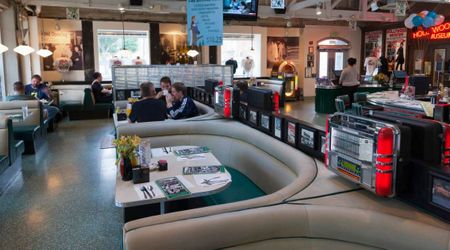'Antiques Roadshow' guest gets a $180,000 valuation for her item — then she says 'not that I'd sell it'

Getting a six-figure appraisal for an item on "Antiques Roadshow" is rare, but the emotions that make the show special also prevent guests from parting with the heirlooms that they bring along. For one guest, the sentimental value of her family heirloom, a Chinese Tang Dynasty Marble Lion, outweighed the six-figure price tag given to her by the show's expert, Lark Mason. The owner who inherited the item from her grandparents simply refused to sell, leaving everyone stunned.

In the episode, the guest shared the story of how she got the item, which she believed was from the famous Ming Dynasty that ruled in China from 1368 to 1644. "My grandparents picked it up. They traveled a lot in China in the early part of the century," she told Mason in the episode filmed in 2002. She added that her mother had kept the lion statue in her house for years before she inherited it. "She knew someone who knew about Chinese art, and he looked at it and he said it was from the Ming Dynasty, he thought. And priceless. And that's all I know," she added. The appraiser couldn't hold his excitement at this point as he said, "It's fantastic. This is truly... Sorry, I'm a little worked up."

Mason then took over to explain the provenance and the significance of the item. "This is among the finest examples of Chinese art that we have seen on the Roadshow. The carving is beautiful. The workmanship is stunning. The carver who did this was truly a master. You can see the muscles rippling under the surface. It's the finest quality marble you can get. It's truly magnificent," he remarked. Calling it a breathtaking piece, Mason corrected the guest's saying that it wasn't from the Ming Dynasty but from the older Tang Dynasty.
"This dates from the golden period of Chinese art, which is called the Tang Dynasty between the sixth century and the ninth century. Your grandparents bought something when they were on their trip that you can't get now. You can see examples like this in museums. Occasionally, they come up at auction. It's wonderful," he noted.

"When you look at it underneath, you can see that there's every indication of great age from the chisel work that has taken place to the sort of sandy surface, which is fantastic, that gives you the kind of patina that you want to see. It's something that's been handled, and it's been around for a while," he further explained. Coming to the appraisal, Mason at first hesitated to share a number. After a brief pause, he said that the item could fetch about $120,000 to $180,000 if it came to the market, and all that the guest could say was, "Wow!"

However, in the very next second, she told the appraiser that she wasn't willing to sell it. Thus, sharing an insurance value on the item, Mason said, "an insurance figure on this would be somewhere between $150,000 and $250,000. Probably toward the high end, I would say around $250,000."
The guest was shocked to learn the true value of the item and expressed her gratitude for the appraisal. "So it was worth lugging it in here," she said, laughing in the end.
























